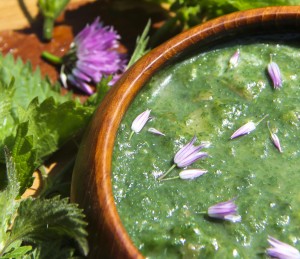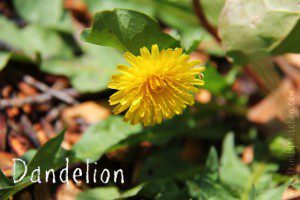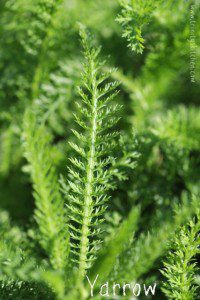Contributing Writer for Wake Up World
Nature’s Superfoods on Your Doorstep
In days gone by, wild foods were all we had, and were a staple diet necessary for human health and survival. Often full of natural medicinal benefits, wild foods often saved lives in times of famine, war and ill health.
It’s a little bizarre to contemplate how radically removed from nature we have actually become. As intensive farming methods and consumerism came into being, our general attunement to nature fell away, and our knowledge thereof has somewhat dwindled. Increasing food prices, uncertain times of global change and decreasing food availability has invited more and more people to contemplate alternative ways of finding food by foraging…
[pro_ad_display_adzone id=”110028″]
Not forgetting of course, the huge waves of people, like myself, who simply feel that eating wild plant food is one of the most vibrational raising ways to reconnect with nature. For me personally, none greater is the joy of sitting down to share a meal brimming with natures super food. Sensitively foraging for wild foods can help foster a much more sustainable way of life. Wild foods require no packaging; cause no pollution due to far off transportation (food miles) and they certainly don’t require the harmful, man made chemicals that seem to be endemic in today’s world.
Full of Nutritional Goodness
Most, if not all, wild edible foods are packed full of vitamins and minerals that far surpass any cultivated varieties of fruit and vegetables. We often pay a high cost for vitamins, minerals and superfoods from around the world, yet most of us don’t realise that nature’s superfood is brimming on our doorstep without ever having to spend a penny. People often find that they need to consume much smaller amounts of wild food than they would compared to regular commercially grown alternatives. One reason for this is the fact that the nutritional content is so high.
Finding Out What’s Available in Your Locality
I’ve posted information about 12 of my favourite wild foods below. If you are about to embark on an exploration of foraging, I would highly recommend finding a good book on the subject, or if possible attending a workshop or course. Nothing beats the guidance from a local foraging enthusiast who can show you a myriad of delicious free goodies in your own area.
 The internet is full of images and information if you would like to learn about individual species. Make sure you know what you are eating and if in doubt, don’t eat it. Whilst there are so many amazing foods in nature well worth of our respectful attention, there are also poisonous plants out there. Plenty of species are familiar to most of us, such as nettles, blackberries and dandelions – these are a great place to start.
The internet is full of images and information if you would like to learn about individual species. Make sure you know what you are eating and if in doubt, don’t eat it. Whilst there are so many amazing foods in nature well worth of our respectful attention, there are also poisonous plants out there. Plenty of species are familiar to most of us, such as nettles, blackberries and dandelions – these are a great place to start.
There is also a wide variety of flavours to excite the taste buds. The important thing is to explore. Some foods are better eaten raw, whilst others bring out the gourmet element when cooked as part of a dish.
Sustainable, Respectful Foraging
With the highest respect for nature and sustainability, I recommend the following guidelines when foraging:
- Only pick the species that are growing in abundance and only the amount that you require. Foraging ceases to be sustainable when people start stripping areas bare. Different countries have their own foraging laws, if you are concerned about this, then do a web search for your own area. In the UK for example, the 1981 Wildlife and Countryside Act determined it illegal to uproot any wild plant without the permission of the owner or occupier of the land and that it is also illegal to pick, uproot, collect the seed from, or sell any particularly rare or vulnerable species.
- Don’t destroy the surrounding species or disturb the homes/nests of any animals.
- I would also advise against picking food from near a road or that which is on ground using pesticides or chemicals.
- Plants at ground level by the side of path are also best left alone, especially if dogs are known to walk in the area.
- Avoid foraging from places where it may be possible that weed controlling chemicals may have been used.
Most of all enjoy!!!
12 Wild Foods to Forage in a Temperate Climate
I’ve drawn up a list of 12 foods that are easy to recognise and harvest. Bear in mind that these are found in abundance in temperate climates, especially my own country Britain. If you live in the tropics and sub-tropics, then you have access to a whole different and exciting bounty of fruits and leaves.
 DANDELIONS
DANDELIONS
Dandelions (Taraxacum) are amazing wild flowers of which every part is edible. They generally have a bitter taste and the leaves are best eaten raw when the leaves are young, although cooking does generally remove that bitterness. You can eat the roots too. The roots are most commonly dried and ground, which make an excellent, convincing coffee substitute.
Dandelions offer an abundance of nutrients, especially vitamins A, K, C & E and the minerals calcium, iron and manganese. Medicinally, dandelions are known to act as a diuretic, helping with liver, urinary and kidney disorders. It’s an excellent tonic and the dried leaves make an excellent all year round tea infusion.
SORREL
Sorrel (Rumex family) is a wild plant that can be found readily in temperate zones. It has a tart, lemony flavour and is a much welcomed source of vitamin C and iron. It is said to be a common ingredient in dishes in Romania, Russia and Hungary, featuring in salads, stews and soups. It is still best eaten in moderation, due to the high levels of oxalic acid.
 HAWTHORN
HAWTHORN
Hawthorn leaves are edible when they first start growing in the spring, becoming more woody and less palatable as they mature. I love munching fresh hawthorn leaves on my walks in the country lanes here in England. A word of caution about hawthorn berries though… be careful! The berries are commonly used to make jelly due to their high pectin content. HOWEVER, DO NOT EAT THE SEEDS! The seeds contain cyanide (as do quite a few fruits, that we don’t generally consume the seeds for, like apples, peaches and apricots). I avoid the berries for this reason, unless I am certain that I can remove the seeds effectively with a fine sieve.
GOOD KING HENRY
Good King Henry (Blitum bonus-henricus) is an amazing wild food that has fallen of the radar for most discerning health enthusiasts. It used to be grown as a vegetable in cottage gardens, although you are much more likely to find it growing in the wild as a ‘weed’ these days. You can cut the shoots off and use them like asparagus. The leaves make a great addition to a salad or substitute for spinach. The one thing I absolutely love about Good King Henry, is that you can harvest the seeds just like you can with quinoa, providing a highly nutritious source of protein goodness. Simply soak them over night, then rinse and remove the saponins to use like you would quinoa.
CHICKWEED
Chickweed (Stellaria media) – I just have to mention this plentiful little star that seems to make itself at home wherever it can. The tender, little tear-shaped leaves usually grow all year round and make a nice vibrant, grassy tasting addition to raw salad. It’s an effective topical remedy for itchy skin including insect bites. Chickweed also has a good reputation for soothing inflamed membrane in the throat, lungs, stomach etc. The spring and summer brings out adorable little star shaped white flowers. These too are edible. For information on how to identify chickweed click here: How to identify chickweed
 WILD GARLIC
WILD GARLIC
Wild Garlic (Ramsons – Allium ursinum) is a spring time foraging speciality in Europe and Asia. This is a welcome addition to the salad table at a time of year when other greens are often lacking. The wild garlic I am talking about here is Allium ursinum also know as ‘ramsons’. I use the leaves in abundance, making wild garlic pesto and adding them to salad, soups and other dishes. The white pretty flowers and bulbs are also edible. There are other related Allium varieties well worth checking out, such as Allium vineale (known as “crow garlic”) more commonly found in North America and Australia or three-cornered leek (Allium triquetrum) with its triangular stems and white bell flowers, commonly found in the South-West of England.
BURDOCK
Burdock (Arctium) used to be a common food in the olden days, although it has fallen off the culinary landscape as people have gone for mass cultivated plant foods instead. This is a massive plant that can be found growing wild in many parts of the world. I often see it growing in the country lanes here in the UK. If you enjoy hiking in the countryside, then you might recognise burdock through the velcro-like burrs (ball type seed pods) that stick to your clothes. The seeds are said to contain very beneficial medicinal properties and have an excellent reputation by herbalists as a blood purifier with it’s diuretic abilities. Burdock is also said to help relieve swelling, arthritis, snake bites, heavy metal poisoning and major skin problems. The roots are thick and carrot like (also known as ‘gobo’ in Japan) and can be used as a root vegetable.
ELDERFLOWERS
Elderflowers (from the Sambucus nigra tree) shower us with a refreshingly gentle, fragrant scent from late spring for a few weeks. The flowers make a great herb tea or elderflower cordial. Elderflower is a good remedy for catarrh inflammations such as hayfever, sinusitis and coughs. I used this last spring, infused in hot water as a tea for the first time after suddenly developing hayfever type symptoms and watery eyes. It worked with good effect. Elderflowers also have pleasantly relaxing properties, which make it a good choice if you are stressed.
 YARROW
YARROW
Yarrow (Achillea millefolium) is a small feathery plant that grows little white flowers. It is found just about everywhere in the Northern Hemisphere. It was traditionally used as a wound healing herb, given its effectiveness at clotting blood. This is worth remembering if you are out hiking and cut yourself (just chew or crush the leaves first to release its healing, astringent properties before applying). This wild plant is also used by herbalists to lower blood pressure after a heart attack or stroke or to lower a fever. I prefer to use it for it’s medicinal benefits, although the leaves make a nice, high energy variation to salads and soups.
ELDERBERRIES
Elderberries (from the Sambucus nigra tree) vary in taste from place to place and make a frequent appearance in jellies and wine. They adorn Elder trees after flowering. It is important to note that whilst the berry pulp and skin is edible, the seeds in the berries are poisonous. So care must be taken to thoroughly sieve them out before using. They are high in vitamin C and are an invaluable resource for any discerning forager.
BLACKBERRIES & BRAMBLE
Blackberries and Bramble (Rubus fruticosus) – Nearly everyone I know in Britain has fond childhood memories of deep red stained hands, those ‘comes-with-the-territory’ prickles and a nice pot full of juicy foraged fruits to take home for blackberry crumble. Most of us have foraged at least something, at one point… and for many people, blackberries are the number one. Sporting an amazing harvest later in the summer, they are exceptionally high in vitamin C, K and the mineral manganese. Blackberries work wonders in a fruit pie or in a smoothie, yet nothing beats eating them fresh off the bush. Much less talked about are the bramble leaves. The fresh younger shoots make a nice addition to a salad.
 STINGING NETTLE
STINGING NETTLE
Stinging Nettle (Urtica dioica) make an excellent spinach like and mineral rich vegetable with copious amounts of calcium, manganese, magnesium and iron. This is nature’s super food at its finest and I am sure to include nettles regularly in my diet between April and September every year. Harvest the young, fresh leaves using gloves (unless you are feeling really brave). Soaking in water or cooking rapidly denatures the sting, making them easily edible either raw or cooked. Nettles have an impressive list of useful benefits but are perhaps best known for their ability to cleanse toxins from the blood and clearing the body of uric acid. They also have a good reputation for reducing arthritic and joint pain and alleviating allergy symptoms. Apart from all that, nettle makes a highly nutritious compost activator and can be used for making rope, sacking and even clothing.
I enjoy lots of walks in the countryside gathering nettles in the spring. For a delicious and highly nutritious wild nettle soup recipe idea, why not try out my ‘Very Nettle’ Wild Soup?
Enjoy and Embrace Mother Nature’s Gifts
Embracing what is divinely given to us in nature, with sensitivity and respect, feels like an important step to take. I do hope that you have as much foraging fun as we do here.
Please feel free to share this article or to share more ideas, tips and things.
Soul to Soul,
Trinity
Further articles by Trinity:
- Keeping Slugs & Snails Off Your Veggies – Compassionately
- The Benefits of Lemon Balm – a Must in Any Garden
- You Are Enough, Exactly As You Are
- The Spirit of the Dolphin
- The Spirituality of Space Clearing: 5 Effective Ways to Clear Stagnant Energy
- Being an Empath
- Make Your Own ‘Loved Up’ Raw Chocolate Brownies (Vegan & Gluten Free!)
- Top Twenty Tips for Conscious Eating
- Ethical Conscious Clothing – Ending Modern Day Slavery
- Chocolate Paradise Coconut Bar Recipe – Vegan, Raw, Absolutely Delicious
About the author:
 Trinity is an experienced, empathic energy worker and the author of ‘Trinity’s Conscious Kitchen’, a recipe book designed to inspire the soul through conscious vegan, wheat-free cuisine.
Trinity is an experienced, empathic energy worker and the author of ‘Trinity’s Conscious Kitchen’, a recipe book designed to inspire the soul through conscious vegan, wheat-free cuisine.
Around 18 years ago, during a profound spiritual awakening, the world around her shattered. She became engulfed in a white, universal, timeless, formless light until nothing else existed – other than the nameless truth at the core of all sentient beings. During this life-changing experience Trinity experienced the soul of all other sentient beings, trees, creatures, people as one pulsating energy. Transcending her into a higher realm of unity and oneness, this experience imparted a divine energy that she has been sharing through spiritual work ever since. She has integrated a wide variety of multidimensional gifts, and works hand in hand with the Angelic Realms, guided by a deep compassion for the Earth and environment.
Understanding that the energy of our food directly impacts sentient life on all levels, Trinity founded Trinity’s Conscious Kitchen, a website devoted to inspiring the soul through conscious vegan cuisine. She is the co-founder of the Openhand Foundation, an organisation dedicated to the evolution of humankind. She works as the divine complement to her soul mate Open to help facilitate the global Ascension process and feels incredibly blessed to be of divine service.
For more information, check out Trinity’s new book Trinity’s Conscious Kitchen on Amazon or visit Openhandweb.org for a huge archive of deep insights for the spiritual journey.
[pro_ad_display_adzone id=”110027″]







